My plane touched down in Sri Lanka at the Colombo International Airport at about midnight. My guide Udaya Chanaka picked me up and we started driving to our first destination at an ecolodge four hours away. When we arrived, I headed straight for my room's open-to-the-sky shower, where I was joined by this fine frog, my first Sri Lankan herp.
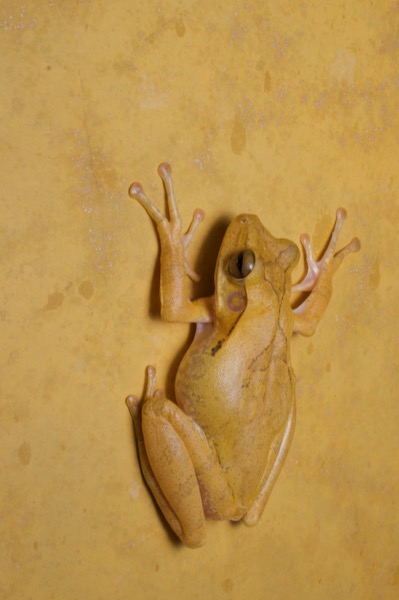
A couple of days later a second species put in an appearance in that same shower, this time on the floor.
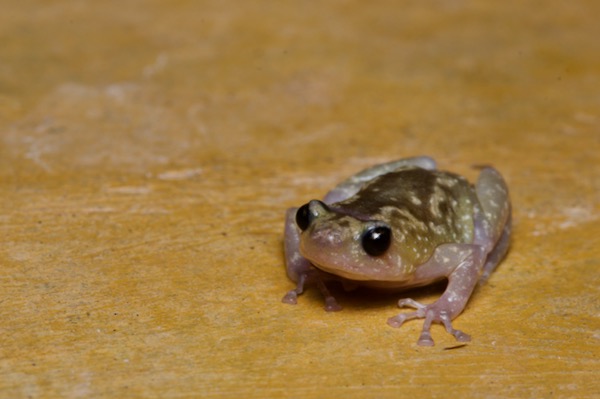
Our second destination was a smaller home-cum-lodge in the Knuckles mountain range. It had a standard indoor bathroom, but still boasted its own amphibious fauna.
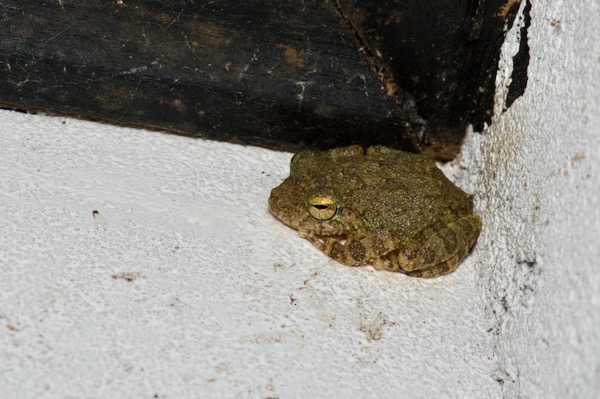
This frogs-in-the-bathroom motif was taken to its logical conclusion at Yala National Park in the dry lowlands, where the public restroom facilities were damp enough to attract what seemed to be all of the frogs in the general area.
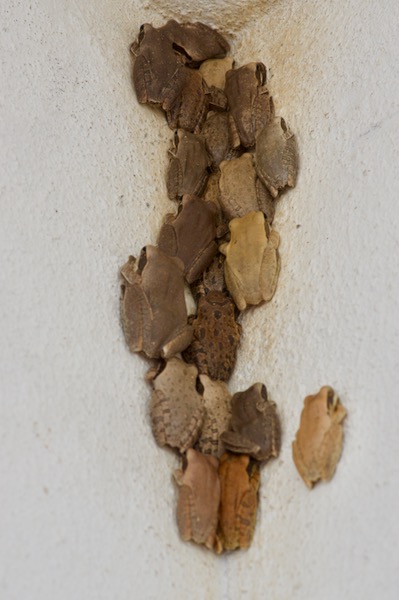
But enough of the frogs in the bathrooms (can there ever really be enough?), I will now present most of the frogs I saw in Sri Lanka in a more taxonomical way. This is not all the species I saw; I left out a few for which I only got mediocre-at-best photos.
Bufonidae
Duttaphrynus melanostictus is a very common and widespread toad throughout southeast Asia. I was surprised that we only saw a handful of them. Perhaps they are much more common in more degraded habitats, which they tolerate better than most frogs. Here is the first one we came across, a medium-sized and pleasantly plump individual.
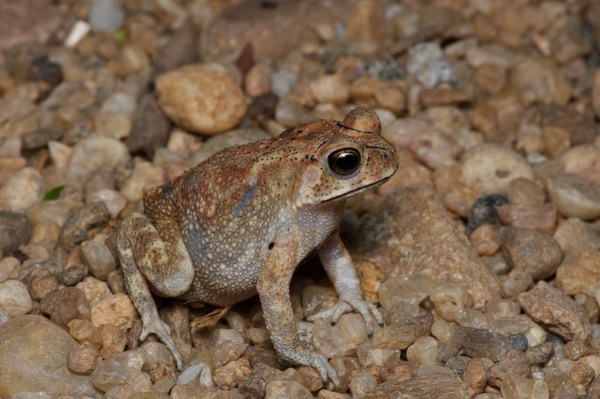
Duttaphrynus noellerti is another of your basic toad-shaped toads, though with some more distinctive textures. This species is endemic to Sri Lanka. We saw a couple of them.
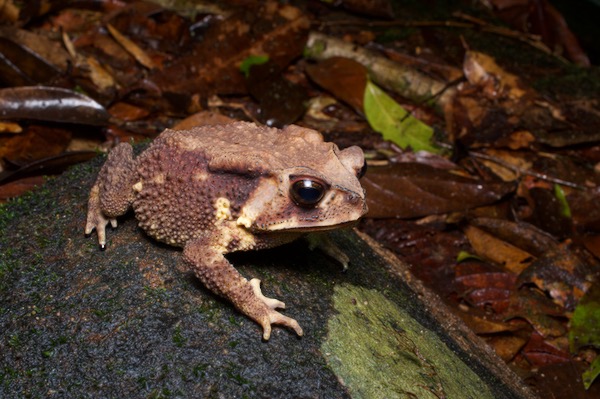
Adenomus kelaartii put in many more appearances than both Duttaphrynus species combined. Which was nice of it, because it is also a noticeably weirder-looking toad, very flat with long skinny limbs.
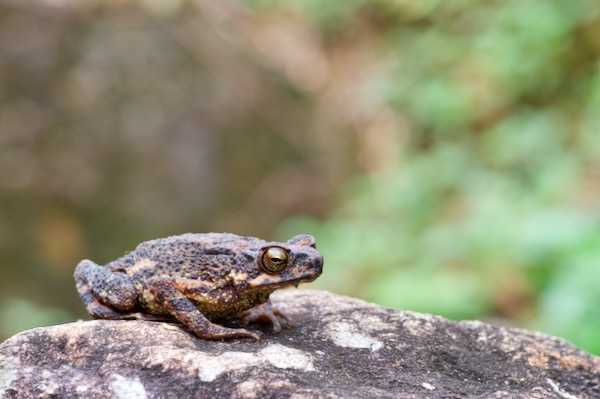
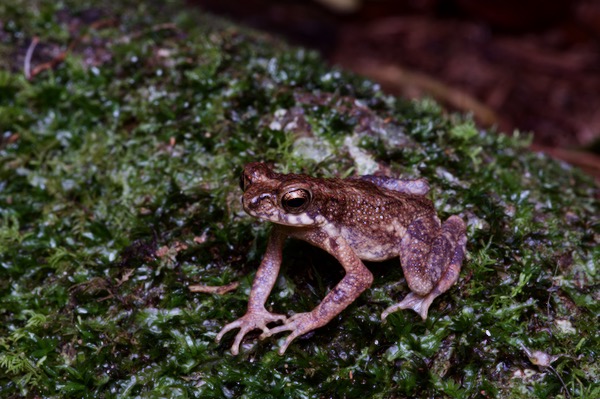
Microhylidae
We saw two types of microhylids, the shower-floor-dwelling Uperodon rohani pictured earlier, and this leaf-litter-dwelling Uperodon. Chanaka didn't recognize it so he took photos from all angles and sent them to his former teacher, the frog expert Kelum Manamendra-Arachchi. It seems to be an undescribed species, very similar to Uperodon obscurus.
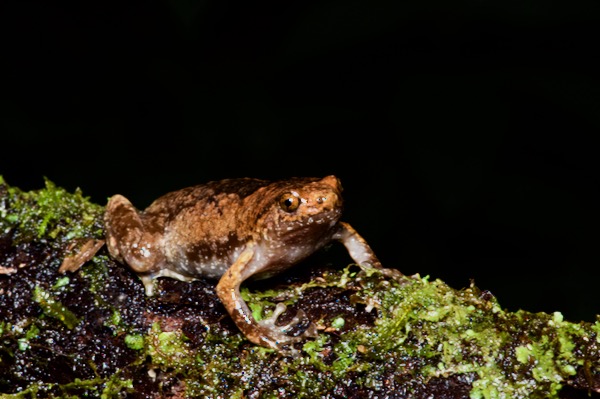
Ranidae
We saw three or four of these handsome but fairly standard-looking ranids, typically in or ready to hop in to water. The one pictured here patrolled the edge of a concrete pond on the grounds of our ecolodge.
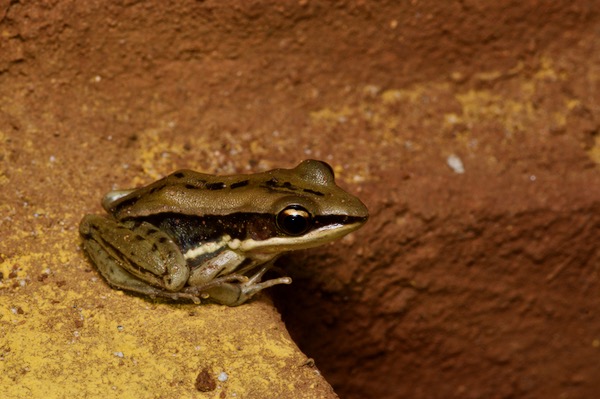
Indosylvirana temporalis, a similar-looking species, was also typically in or near water. This species has a smaller range in Sri Lanka than Hydrophylax gracilis, and is classified by the IUCN as Near Threatened whereas H. gracilis rates as Least Concern, but we saw a lot more of these guys.
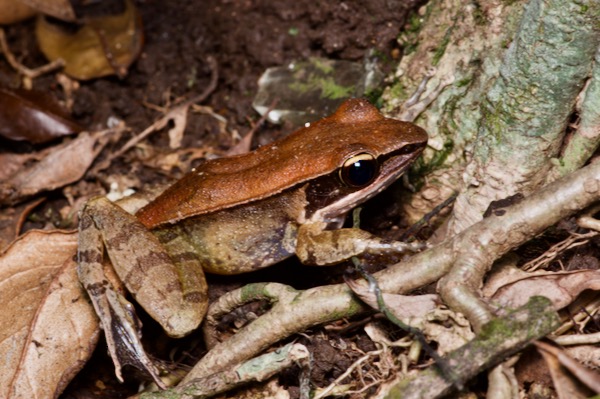
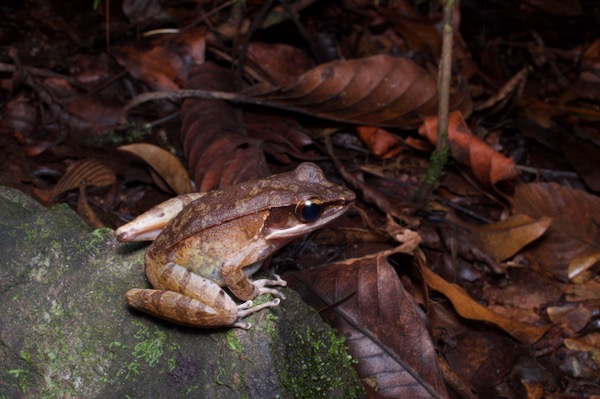
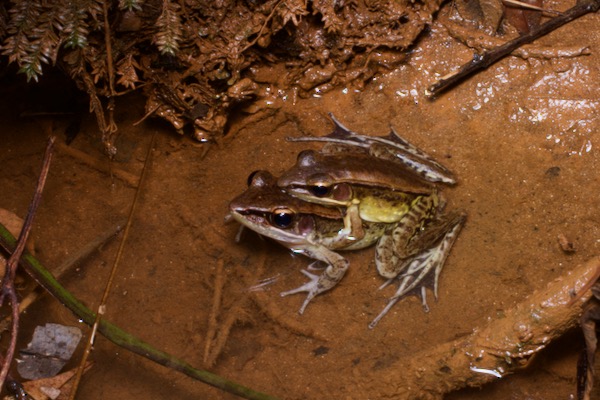
Dicroglossidae
From my biased North American point of view, dicroglossids are like ranids but generally at least a little more interesting.
Euphlyctis cyanophlyctis has that floating frog eyes-on-the-top-of-the-head look that always makes me feel a little dizzy.
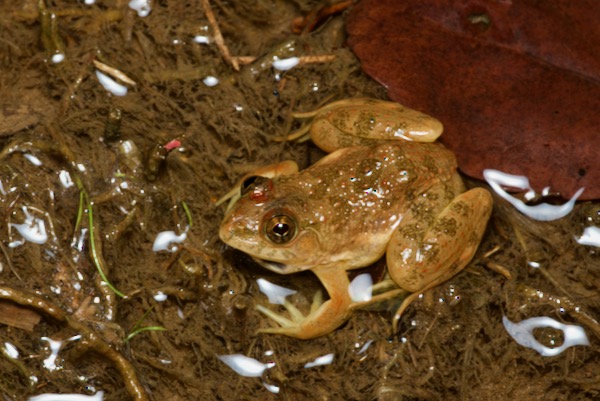
Minervarya kirtisinghei is like your basic ranid, but with some nice ridges and stripes.
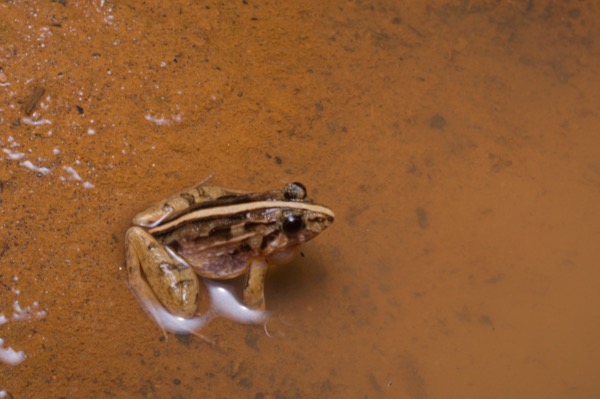
Nannophrys ceylonensis is an excellently weird frog. It squeezes its extra flat body into the gaps between flat slabs of rock that are kept moist by shallow running water.
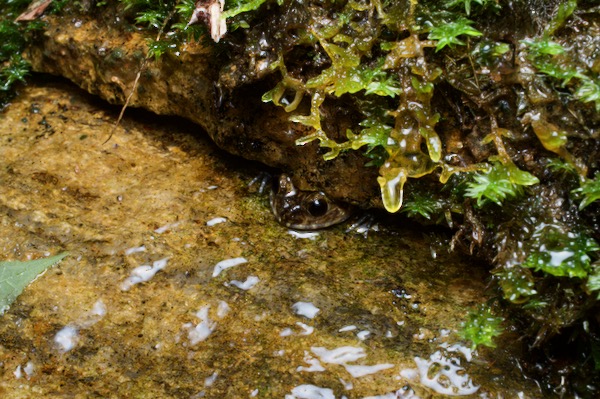
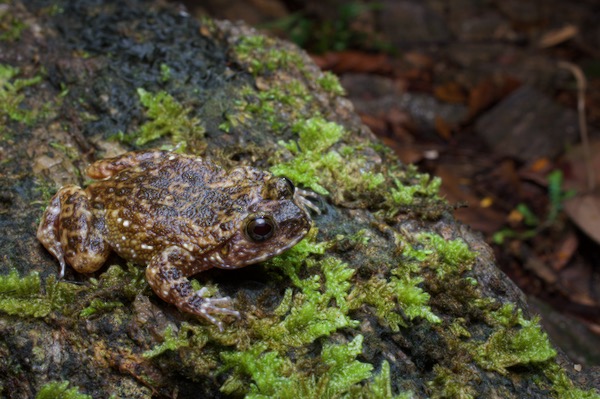
Nannophrys marmorata is much the same, but has a very small range and is considered Crtically Endangered by the IUCN. It is literally a poster child for conservation, featured on billboards in its small home range.
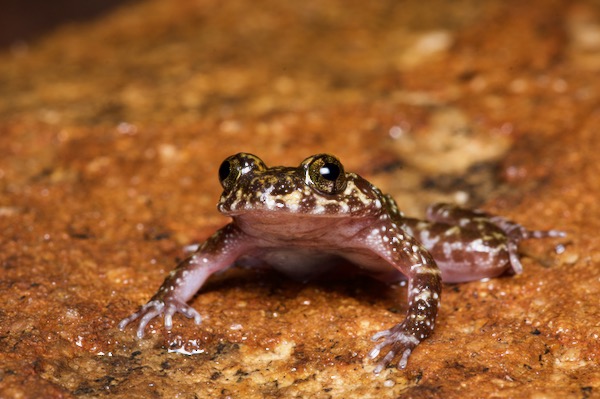
Nyctibatrachidae
I had never seen any frogs in this family before, which isn't surprising since it contains only about 40 known species, two of which live in Sri Lanka and the rest in the Western Ghats of India.
Lankanectes corrugatus is a common aquatic frog in the inland lowlands and mid-elevation regions of southern Sri Lanka, first described in 1863.
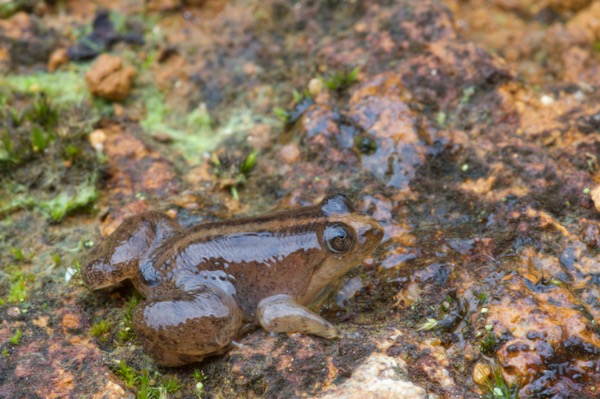
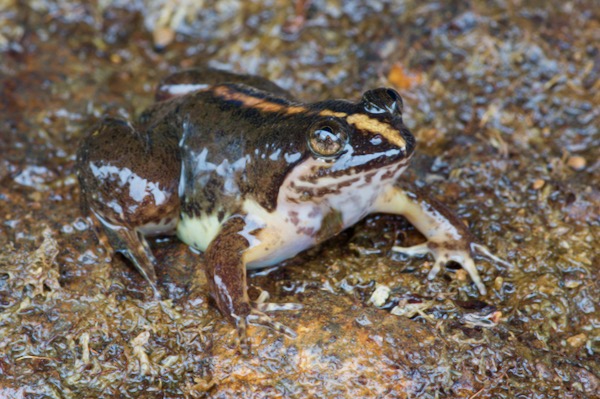
Its cousin Lankanectes pera, on the other hand, has a very small known range in the Knuckles mountain range, and wasn't described until 2018.
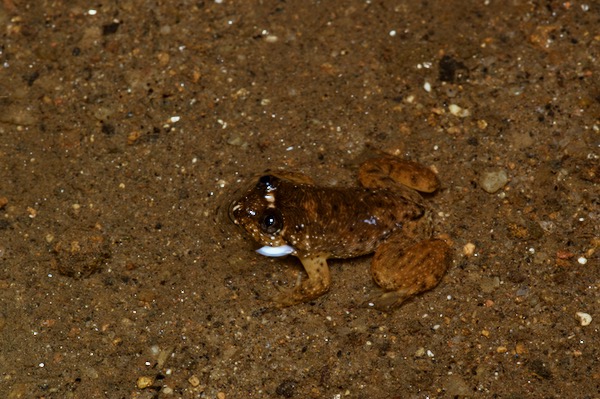
Rhacophoridae
Sri Lanka currently has about 120 recognized species of frogs. Of these, about 80 of them are in the family Rhacophoridae, also known as Old World Treefrogs. I showed a couple of these already, in the frogs-in-bathrooms collection: Polypedates cruciger and Polypedates maculatus. Outside of Polypedates, all the Sri Lankan rhacophorids are either in the genus Taruga or the genus Pseudophilautus.
The Sri Lankan endemic genus Taruga was split off from Polypedates in 2010. The three species in this genus look quite similar, but each has a small range distinct from the others. They are all comically pointy-nosed frogs.
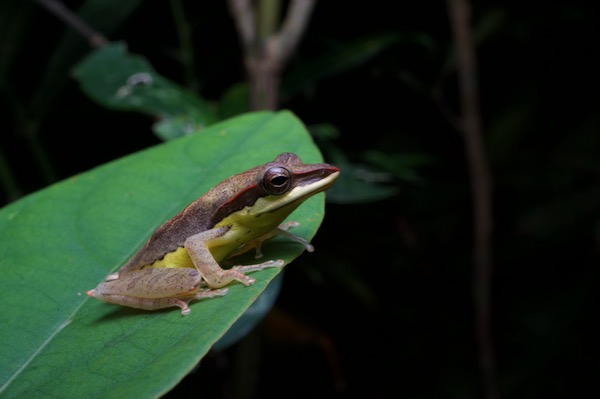
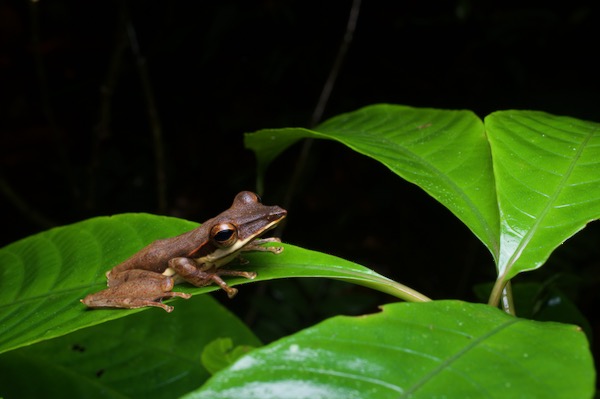
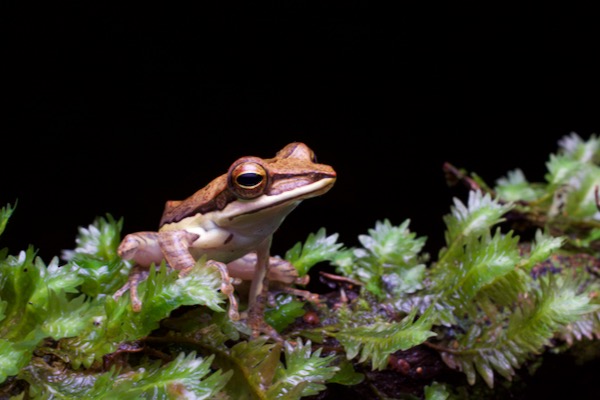
Pseudophilautus, another Sri Lankan endemic genus, currently contains over 70 species, more than 40 of which have been described since 2005. Don't turn your back or you'll miss another Pseudophilautus or two being described.
They are all small to medium-sized frogs, typically found in vegetation and active at night. Many species are known from a small area, with closely related species often separated by valleys or mountains.
I saw about 30 Pseudophilautus species on this trip. My guide Udaya Chanaka provided and/or confirmed identifications for most of them. The identities of a few others came from iNaturalist. Blame me, but also please tell me, if you think any have been incorrectly identified.
Let's start with a few of the fairly generic little brown species, as a warm-up.
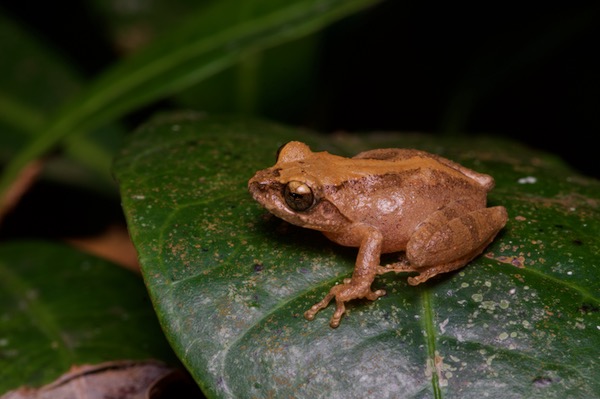
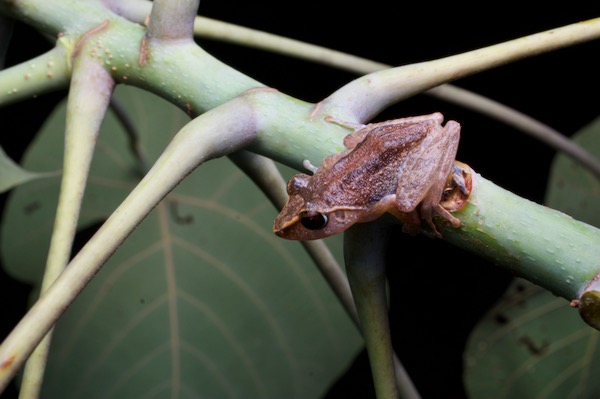
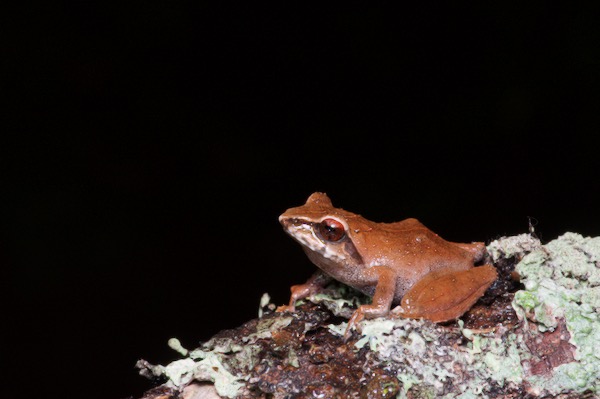
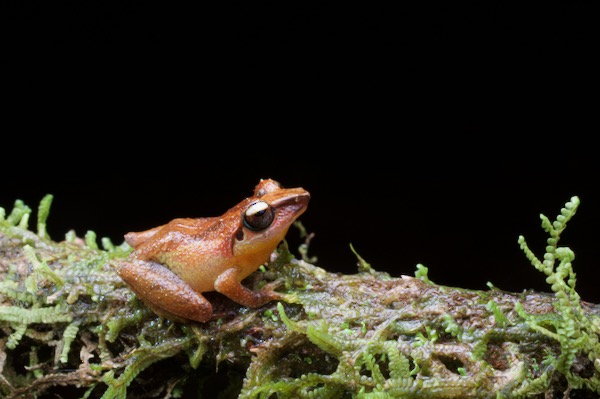
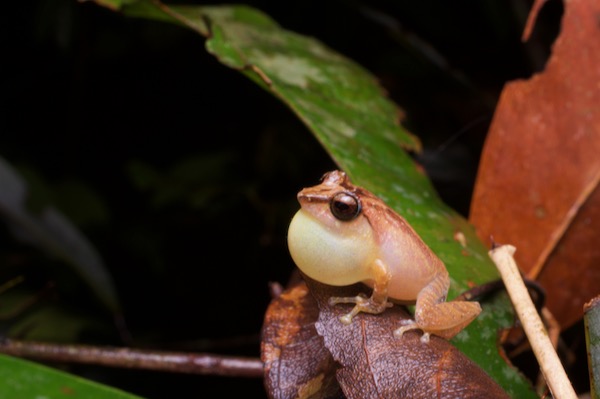
This one is also little and brown, but has somewhat different proportions, including bigger eyes and a rounder snout.
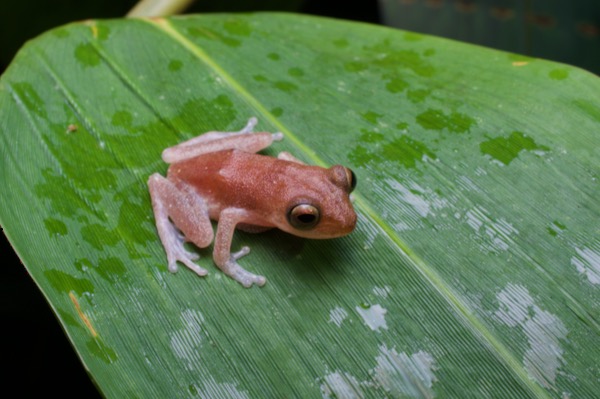
This one has distinctive orange/red nail polish, and a white patch under the eye. I like the straightforward specific name: "abundus" because they are abundant. I feel a little sorry for the researchers who had to come up with distinctive names for all 27 species that they described in a single article.
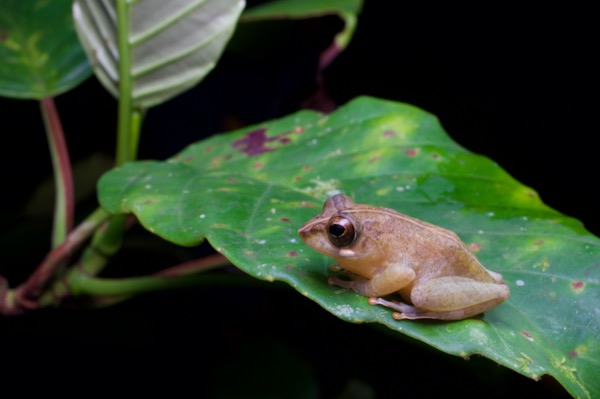
My favorite specific name for a Pseudophilautus is this next one, whose etymology is explained in the formal description as follows: “The species name is a reference to the Greek for ‘the many’ (applied here as a noun in apposition), now slang for ‘the common people’ — an allusion to the exclusively synanthropic distribution of this species”. This is fancy talk for “They are usually found around people”.
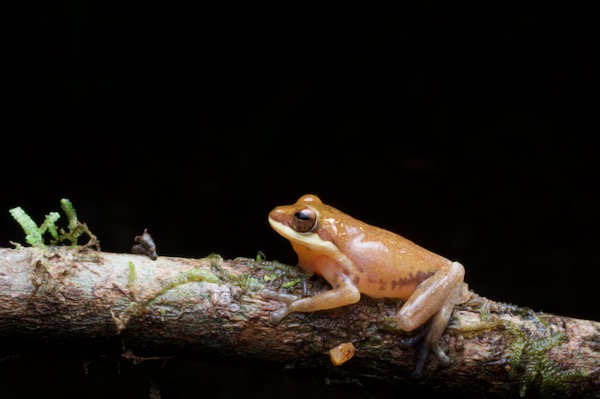
Pseudophilautus hypomelas went into hiding in 1874 and was eventually declared extinct, before being rediscovered in 2013.
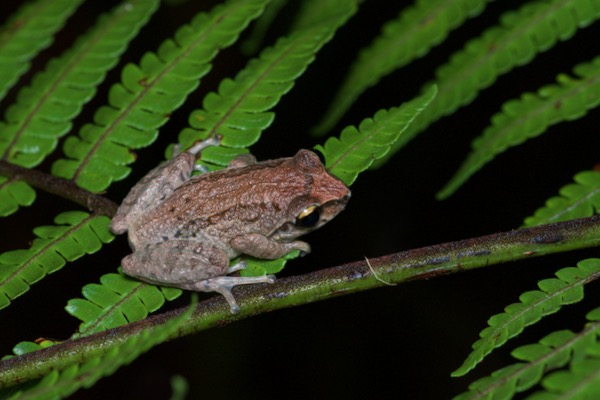
Now we're starting to stray from the basically small, brown frogs. This species was orange, with very rough skin.
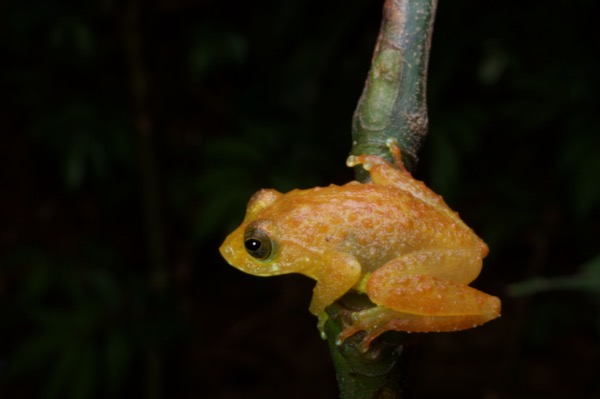
This species was basically brown, but medium-sized rather than small, and covered with little white tubercles.

This Pseudophilautus microtympanum was about the same size as that P. silus, and had some similar markings, such as the banding on the hind legs. My first thought is that they were the same species, but people who know more about these frogs than I do say otherwise.
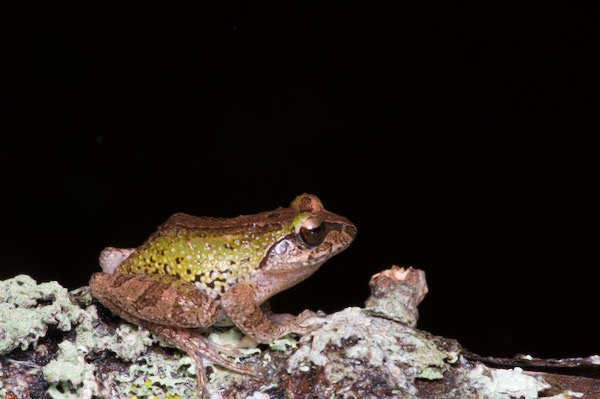
Pseudophilautus decoris was marble-smooth, with an attractive pattern supporting its "Elegant" common English name.
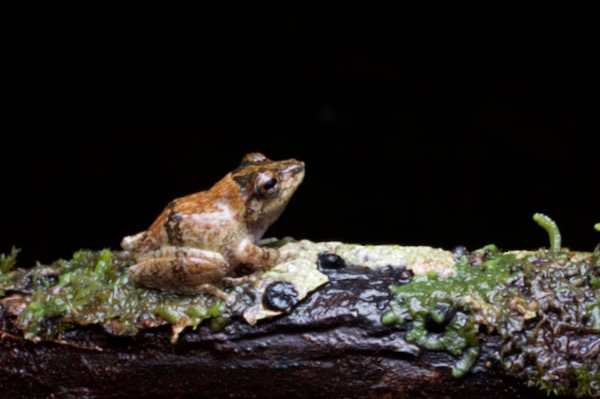
Another beautifully patterned species, Pseudophilautus singu also possesses extra-large tubercles on its head.
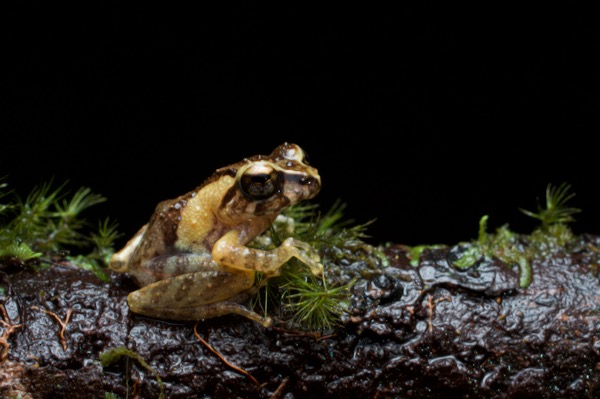
This is a larger species, one of several Pseudophilautus found only in the Knuckles mountain range. This one got the coveted “Knuckles Shrub Frog” common name, perhaps because it is bigger than the others and therefore could intimidate them into taking less desirable names. (Sorry, I'm up late and I might be starting to lose it.)
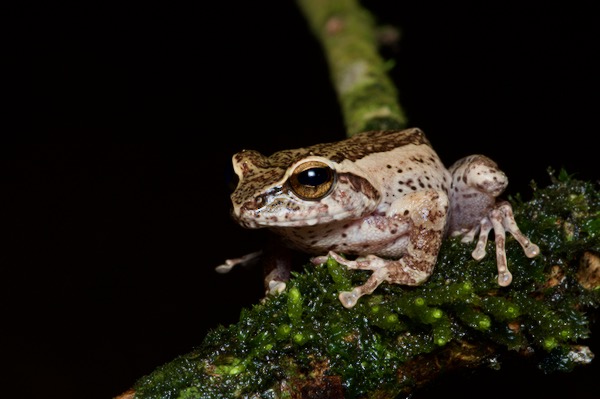
This is the same species we first saw in the bathroom, but this individual was out in the forest where it belongs. It would have had amazing camouflage if it were on a hunk of mossy bark, but it stands out rather noticeably on this plain green leaf.
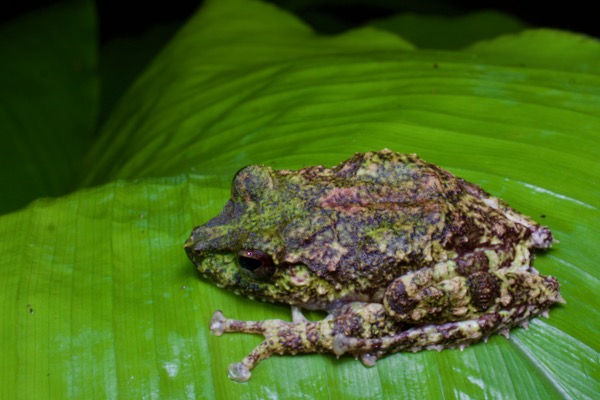
This fine-looking little frog was saddled with an undeservingly unpleasant name. In the original description, the etymology is clarified as follows: “The species-name is a reference to the grubby appearance of this frog. Latin, sordidus = ‘dirty’”. Is that nice? I think not.
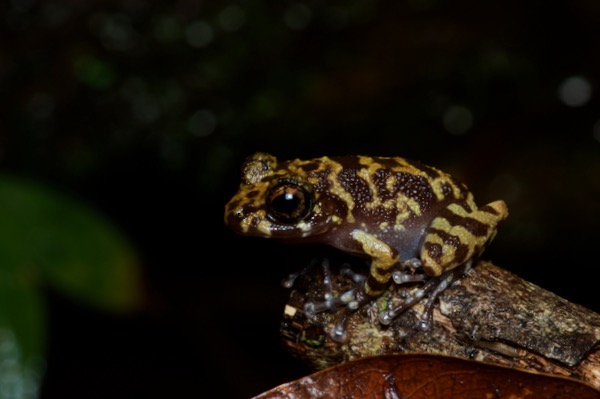
This frog is so much more brightly colored than a typical Pseudophilautus sarasinorum that for a while we thought it was an undescribed species. But if you tone down the colors several notches it has all the visible characteristics of this species.
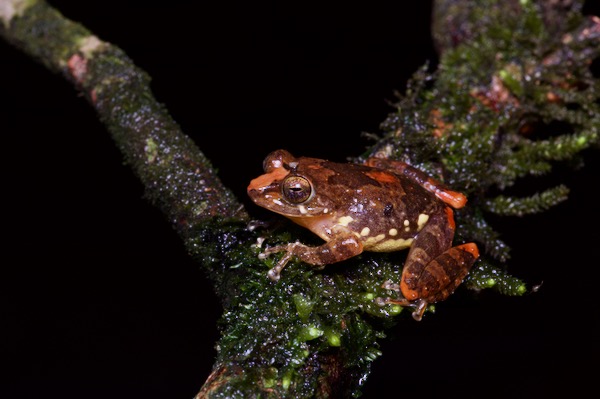
Here's another unusually colored frog. This species ranges in color from green to pinkish to yellowish to nearly white, sometimes with combinations of these colors.
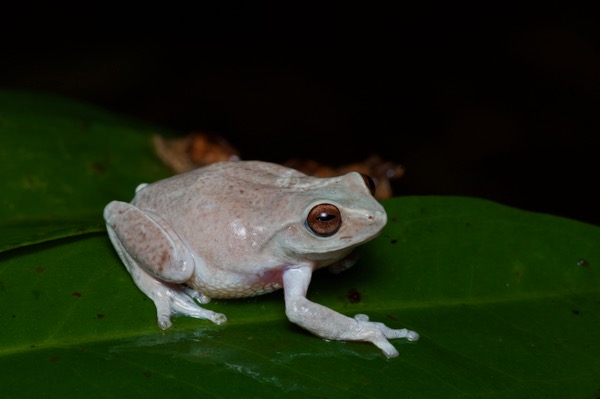
Pseudophilautus reticulatus is the largest of all known Pseudophilautus. This isn't saying a whole lot, since in general Pseudophilautus are small, but somebody has to be the largest.
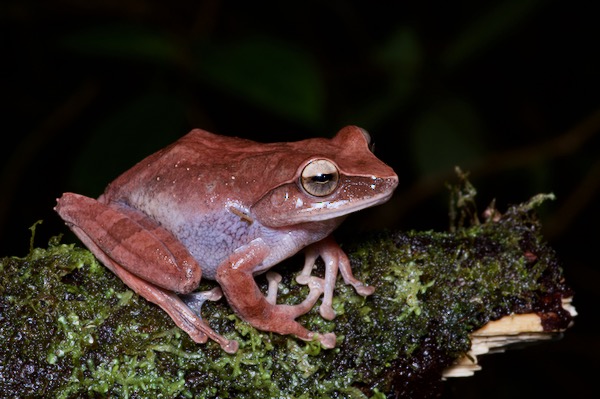
When I saw this little brown Pseudophilautus I assumed it was probably one of the numerous little brown species we had already seen, so I just took this one photo and moved on. My guide Udaya Chanaka took a look at the photo and told me it is not any known species.
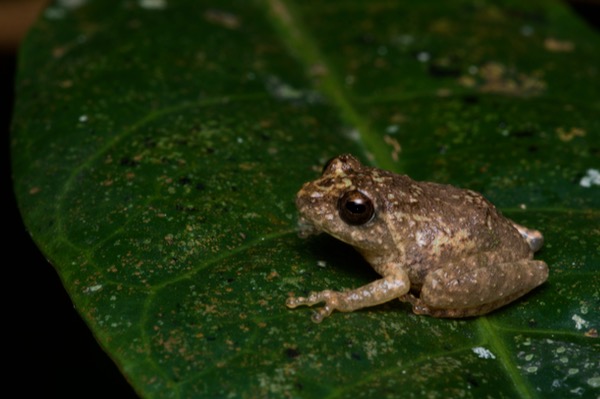
Finally, there are several beautiful green Pseudophilautus species, of which I was fortunate to see at least five.
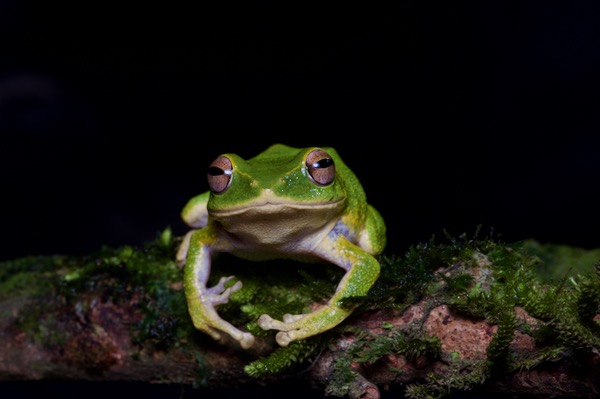
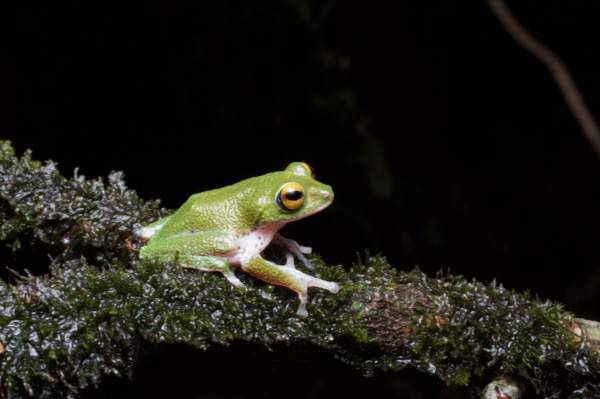
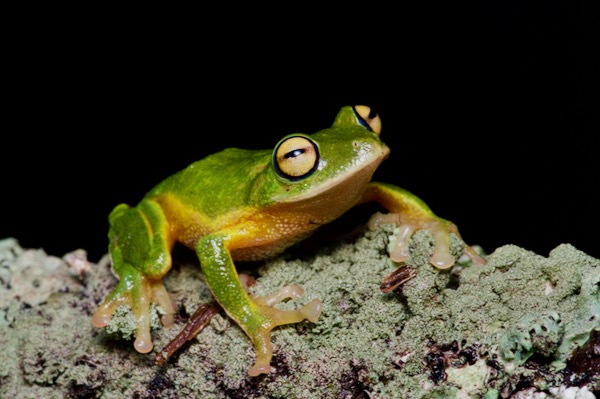
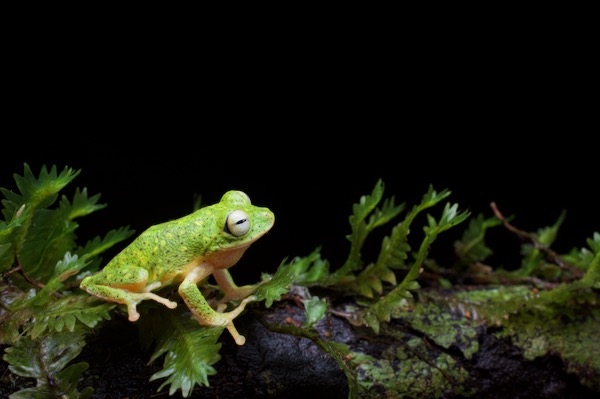
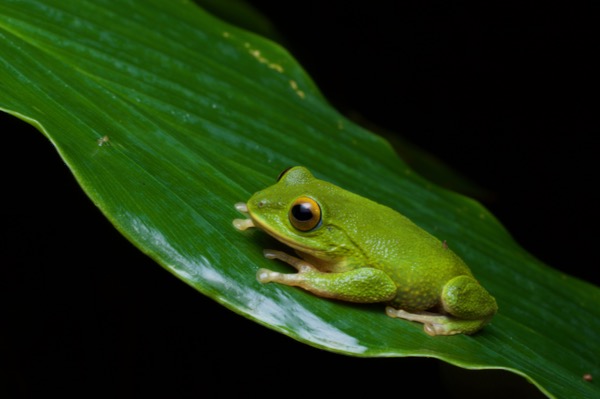
Next: Snakes